Edition - July, 2014
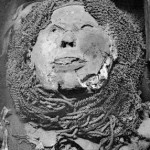
Queen Duathathor-Henuttawy (21st Dynasty), Wife of King Pinedjem I
By Kate Phizackerley. Published on Egyptological, In Brief. June 16th 2014 I have a fascination with the queens of ancient Egypt. If the popular literature is to be believed, only Hatshepsut and Cleopatra were of any particular interest, with other queens relegated to mere adjuncts to their husbands or fathers. I have previously written about […] [more…]
Edition - June, 2012
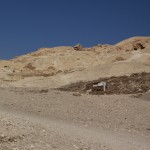
The Mystery of Psusenes III
John Gardner Wilkinson published his ‘Materia Hieroglyphica’ in Malta in 1828, having spent the previous year in Luxor recording inscriptions in the Nobles’ Tombs. The most important aspect of this volume is the inclusion of records from the Theban Tomb TTA18 which early Egyptologists used to identify pharaoh Psusenes III. As TTA18 contains the only mention of Psusenes III, some scholars are starting to doubt if this identification of an otherwise unattested pharaoh was at all correct. Others probed into the possibility that Psusenes III is the same person as Psusenes II. Yet others see Psusenes III as High Priest of Amen only. [more…]
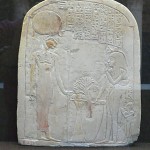
An Offering to Henut-Mestjet
All Ancient Egyptian lion deities share the same basic attributes. Capable of great rage and great kindness, some are associated very closely with the Eye of Ra and all were considered to be important protectors of the dead, fierce and nurturing protectors. Of all the leonine deities the most elusive is Henut-Mestjet, or Mestjet. [more…]
Edition - March, 2012
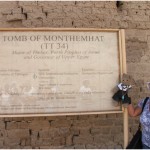
Lecture Overview: ‘Massive, Complex, Beautiful, Hidden’ by Chris Naunton
With fellow member of Sussex Egyptology Society, Amena, we made it to Chris Naunton’s talk to the Sussex Archaeology Society at the University of Sussex in Brighton on 15th March 2012 . Once inside the venue, we found a superb lecture theatre with a welcoming and enthusiastic audience. Chris called his illustrated talk Massive, Complex, Beautiful, Hidden. His title described TT37, the Tomb of Harwa at South Asasif, Western Thebes where Chris has been involved over 4 seasons. [more…]
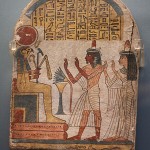
A Context for Nehmes-Bastet (KV64): A Birds Eye View of the Early Third Intermediate Period – Part 1
In January 2012, thanks to the discovery of a new tomb in the Valley of the Kings, named KV64, the 22nd Dynasty was catapulted into the spotlight. At the moment, apart from a couple of tantalising photographs and a video released by the University of Basel (Switzerland) all we know is that the mummified woman was called Nehmes-Bastet; she was a chantress; and her father was a priest at the Temple of Karnak [more…]
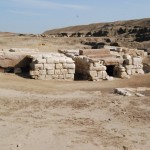
A Context for Nehmes-Bastet (KV64): A Birds Eye View of the Early Third Intermediate Period – Part 2
In Part 1 the political background to and development of the Third Intermediate Period was described, emphasizing the way in which power became divided, both within the Delta and between the Delta and the south, where the Theban high priests became increasingly powerful. Part 2 looks at the blending of Libyan and Egyptian traditions, with new ideas expressed in funerary practices and in the role of religious institutions. [more…]
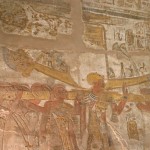
Consulting the Oracle
The word oracle derives from the Latin verb orare, to speak. Oracles were common to a number of cultures and are particularly associated with Classical Greece, where oracles were usually living individuals, male or female. In Egypt the oracle was a statue, usually hidden in the centre of the god’s temple, but taken out into the streets on procession during festivals for the public to consult. In either form the purpose of an oracle was to channel the messages of god, giving answers to specific questions. [more…]
Edition - January, 2012
Tomb K64 in the Valley of the Kings – The Story as it Broke
This brief article was written on 15th January when the discovery of Tomb KV64 in the Valley of the Kings was formally announced. Please refer to the Addendum of 18th January for the latest news, which also corrects some of the orginal report. The tomb was announced in Luxor by Mansour Boraik in Luxor and […] [more…]
 By
By